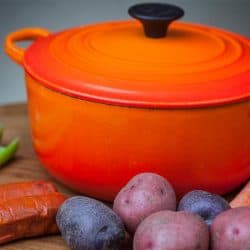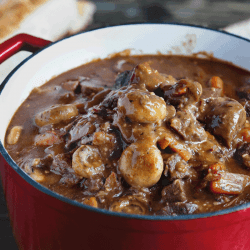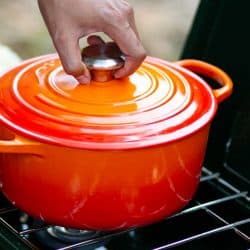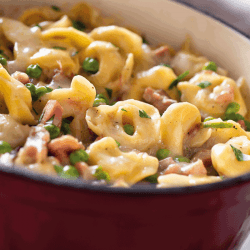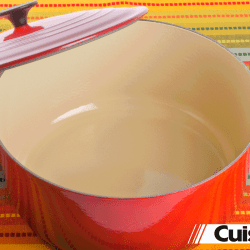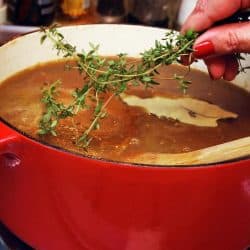Dutch ovens are a delight to cook with, but they can be dreadfully difficult to clean. After you’ve slaved away preparing a steamy stew, the last thing you want to do is hand-wash your Dutch oven. So, you’re probably thinking, “Why not pop my Dutch oven in the dishwasher?” Not so fast! You need to check out the research we’ve done on this topic before putting your dirty Dutch oven in the dishwasher.
Although some Dutch oven manufacturers say these items are dishwasher-safe, most chefs recommend cleaning them by hand. Over time, the intense abrasion of your dishwasher will strip away the Dutch oven’s enamel coating. This could lead to unsightly warping and chipping. While it takes extra effort to clean a Dutch oven by hand, it will help preserve this piece of cookware for many years of cooking.
Nothing beats the convenience of using a dishwasher, but cleaning a Dutch oven by hand isn’t all that bad. Even if your Dutch oven has a few dark spots, there are many simple ways to make it look brand new and preserve its enamel coating. Please keep reading to figure out how to keep your Dutch oven squeaky clean for the long haul.

Can I Put My Dutch Oven In The Dishwasher?
Generally, chefs don’t recommend putting a Dutch oven in the dishwasher. Even if you’ve got an enamel-coated Dutch oven, the dishwasher is too abrasive for this piece of cookware.
The more often you rely on a dishwasher, the more likely it will dull your Dutch oven’s sparkly enamel finish. Most likely, your Dutch oven will pick up “warped” marks that—although not dangerous to your health—just look bad. Plus, once these marks appear, they’re almost impossible to remove.
If you use the dishwasher too much, you may notice chips or cracks in your Dutch oven. These cracks pose a significant safety risk as the glass from the enamel coating could get into your food.
For those who have a traditional cast-iron Dutch oven, you should never put it in the dishwasher. The harsh soaps in your dishwasher will strip away your Dutch oven’s precious seasoning. Plus, there’s a good chance the dishwasher will cause rust over time, and nobody wants literal “iron” in their food!
To learn the ins-and-outs of cooking and cleaning with Dutch ovens, you’ve got to check out this video:
If you’re wondering whether to put Dutch ovens in the dishwasher, then you may also be curious about putting this product in the microwave. Luckily for you, KitchenSeer has a post entitled, “Can Dutch Ovens Go In The Microwave?”
Why Does Everything Stick To My Le Creuset?

According to Le Creuset (and Reddit), the top reason people notice food sticking to their Dutch oven is that they use an improper heat setting. Unlike a wok, Dutch ovens are ideal for low to moderate heat settings. If you set your stove too high, it won’t distribute the heat properly, which could cause food to stick. It’s best to go “low and slow” when using a Dutch oven to minimize food sticking.
Another potential reason food clings to your Le Creuset has to do with what you’re cooking. You have to be extra careful with oily or fatty foods. To avoid staining, be sure to fill your Le Creuset with warm, soapy water and let it sit for 10 - 15 minutes before washing with a non-steel sponge.
How Do I Get Brown Stains Off My Le Creuset?
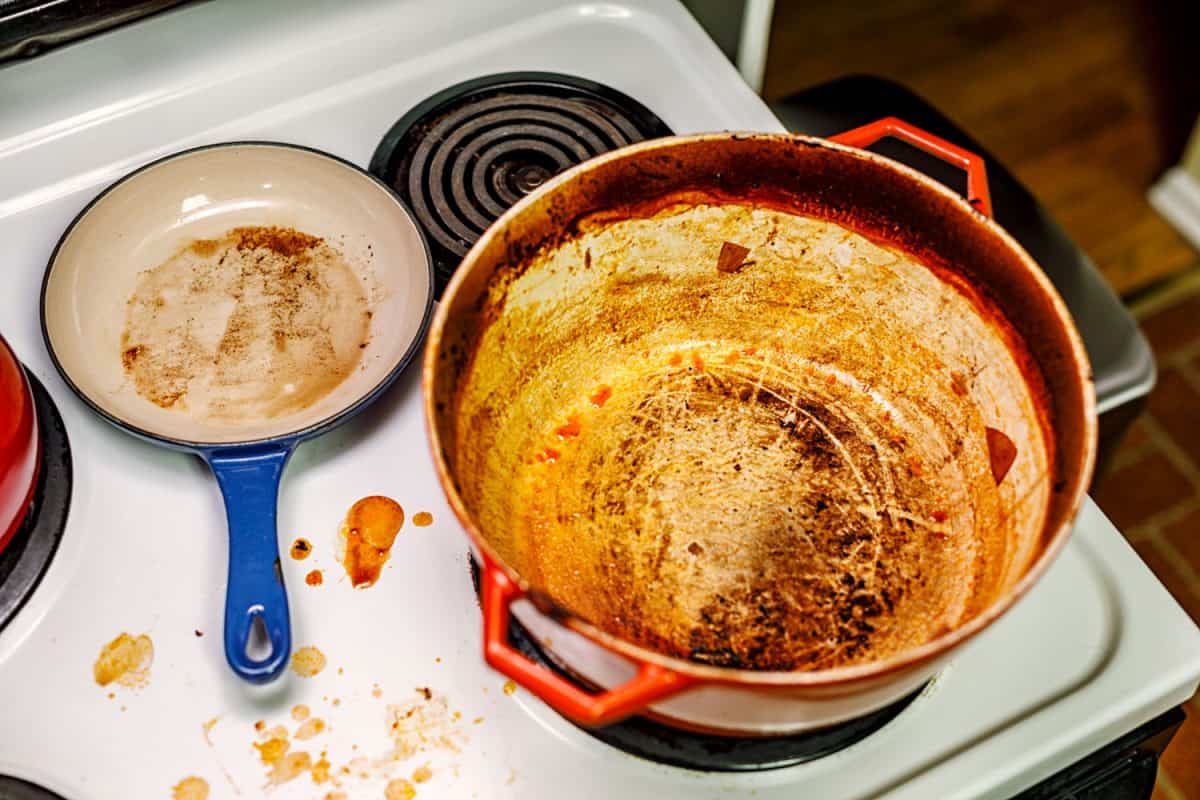
If you can’t get brown stains off your Dutch oven with warm soap and water, Le Creuset recommends filling your pot with warm water and mixing it with about two tablespoons of baking soda. Put your Dutch oven over medium-high heat and let it reach a simmer. Once the water is simmering, you could use wooden spoons to scrape the brown bits on the bottom.
Find out more on this Amazon link.
After about 10 minutes of scrubbing, shut off the heat and let your Dutch oven cool. You could then dump the water down the drain and wash it with warm water and soap.
For a visual demonstration of this method, be sure to watch this video:
Can You Use Bleach On Le Creuset?

It’s safe to use bleach and water to clean a Le Creuset Dutch oven. For weak stains, the company recommends mixing one teaspoon of bleach with one pint of water and letting it stand overnight. The following day, pour out the bleach mixture and wash as you usually would.
You could also try a more potent mix of 1:3 bleach-to-water and leave it overnight. Again, be sure to wash this pot thoroughly in the morning with warm soapy water.
This method is excellent for removing stains, but you should use it sparingly. It’s best to use bleach to clean your Dutch oven no more than twice per year.
You could learn more about using this method in this video:
How Do You Clean A Cast-Iron Dutch Oven With Salt?
Salt is a particularly good abrasive to use on cast-iron Dutch ovens. To use this method, sprinkle some salt where your pot has food stuck and scrub with a tiny bit of water and the soft side of a sponge. Keep scrubbing till the food comes off. Once you’re satisfied, wash with warm water and your sponge.
Some people also recommend pouring salt into your Dutch oven while your heat is on high. Once the Dutch oven is hot, scrub the interior of your pot with a sponge to get rid of the food particles. When you’re satisfied, you can put a little water in your Dutch oven and let the steam loosen up any remaining bits. Clean your Dutch oven with warm water and a sponge once it has cooled.
For more info on cleaning cast-iron with salt, you may want to check out this video:
Will A Dutch Oven Rust?
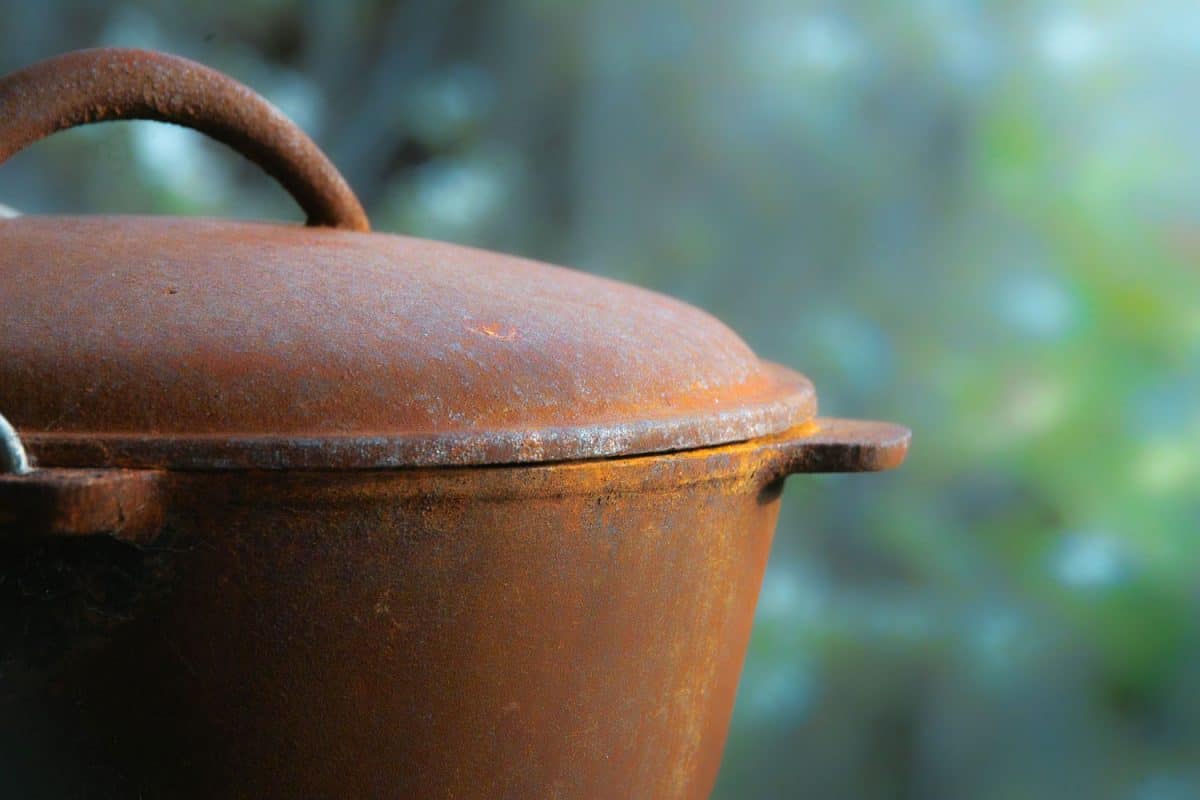
Rusting is common in classic cast-iron Dutch ovens (i.e., models without an enamel coating). Most often, rusting occurs due to improper cleaning or storage. Also, when you have a cast-iron Dutch oven, you have to keep it well-seasoned for the best results.
To learn more about properly caring for your cast-iron cookware, you need to read our post, “How Often Do You Season A Cast-Iron Pan?”
Can You Use Steel Sponges On A Dutch Oven?
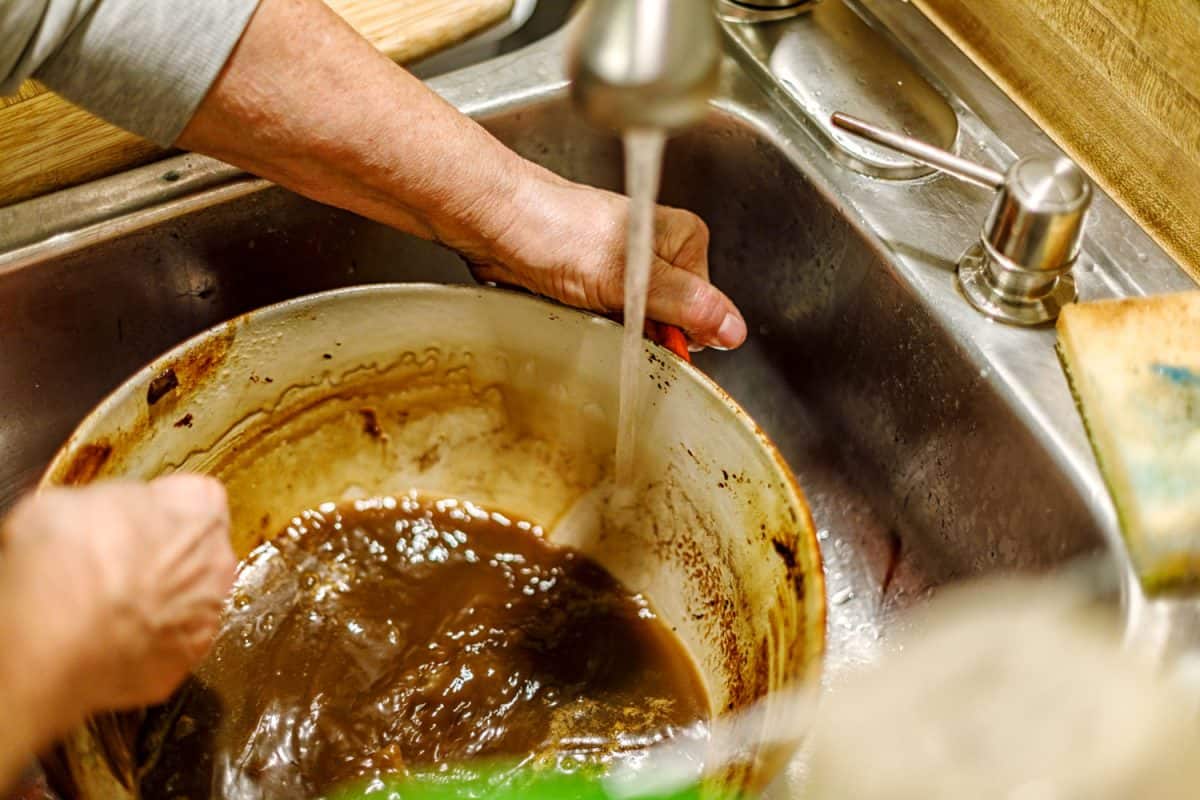
Manufacturers like Le Creuset never recommend using steel sponges to clean Dutch ovens. These cleaning pads are far too abrasive for your pot’s enamel coating. If you continuously use steel sponges to clean Dutch ovens, it will cause scratching and staining.
It’s always best to use a standard, non-metal sponge when cleaning your Dutch oven.
Find out more on this Amazon link.
Is It Okay To Clean A Dutch Oven With Vinegar?
Some cooks use a mix of white vinegar, baking soda, and water to get rid of stubborn stains on their Dutch oven. To use this method:
- Add a little water to about one tablespoon of baking soda to form a paste.
- Spread this paste over the stains you want to remove from your Dutch oven.
- Carefully spray a little white vinegar over the baking soda paste.
As you may remember from science class, mixing vinegar with baking soda creates a “fizzy” reaction. As this mix starts to bubble, use a non-steel sponge to scrub away any debris. When you’re satisfied with the results, you can clean your Dutch oven with warm, soapy water.
Could I Use Bar Keeper’s Friend To Clean A Dutch Oven?
One cleaning product many Dutch oven users swear by is called Bar Keeper’s Friend. This long-standing brand relies on a chemical called oxalic acid to help break up any crud that has accumulated on your Dutch oven.
So, if you’ve used a bunch of DIY cleaning methods and still have stains in your Dutch oven, you may want to give Bar Keeper’s Friend a try.
Find out more on this Amazon link.
To learn how to use Bar Keeper’s Friend on a Dutch oven, please watch this video:
So, Are Dutch Ovens On The “No Dishwasher” List?
Despite what manufacturers may claim, it’s always better to hand-wash your Dutch oven. While one or two cycles in the dishwasher may not “ruin” your enamel-coated Dutch oven, it will increase the risk of warping and cracking. To be on the safe side, you should use a trusty sponge with soap and water. You could also try using baking soda, white vinegar, bleach, or salt for stubborn stains.




